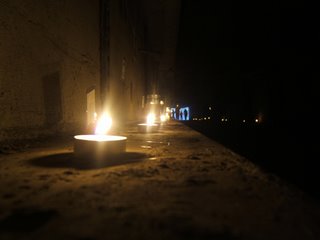Attending conferences and grading have kept me from the blog as of late. Last weekend I attended the intermittently held "Rethinking Marxism" Conference (aka: Marx-a-palooza). This is my fourth time attending the conference. Which means that a) I got to see a lot of people that I know and b) the whole place (UMASS conference center/student union) has all kinds of Proustian resonances. I never knew that grey concrete could conjure up so many memories.
The pleasures of this conference were mostly of the social variety. To quote the old man himself:
When communist workmen associate with one another, theory, propaganda, etc., is their first end. But at the same time, as a result of this association, they acquire a new need— the need for society— and what appears as a means becomes an end. In this practical process the most splendid results are to be observed whenever French socialist workers are seen together. Such things as smoking, drinking, eating, etc., are no longer means of contact or means that bring them together. Association, society and conversation, which again has association as its end, are enough for them; the brotherhood of man is no mere phrase with them, but a fact of life, and the nobility of man shines upon us from their work-hardened bodies (1844 Manuscripts)
Strike the whole patriarchal (or fraternal) "brotherhood of man" and the "work-hardened bodies," these are academics after all, and you pretty much get the picture. All in all I saw friends from undergrad, grad school, as well as my current institution, and managed to make some new ones as well. Yes, it is true what they say, there ain't no party like a Marxist party (cause of all the denunciations...)
Anyone who has attended the conference knows that the real fun (and by fun I mean fiasco) is in the plenary sessions, in which various big-wigs are harangued for the sins of theory, as well as everything that has or has not happened under the name of Marxism. The wigs were not as big this time (Ernesto Laclau, Susan Buck-Morss, Kojin Karatini, are hardly household names), but that did not keep the last plenary on "Rethinking Communism" from getting pretty contentious. First, I should say that I really admire RM for putting this panel on, after all Marx has become perfectly respectable academically (even "The Economist" says we should read him), but communism is another thing entirely. It was, however, the name of communism, as well as the fact that a certain speaker (who shall remain unnameded) went well over his allotteded time, that opened up the floor to all kinds of frustrations. As much as I cringe at every demand to "tell us what we should do to bring about revolution" (or something like that) I have to say that I like the insistence on some connection to politics, to practice. After all you just do not get those kind of questions at SPEP.
The pleasures of this conference were mostly of the social variety. To quote the old man himself:
When communist workmen associate with one another, theory, propaganda, etc., is their first end. But at the same time, as a result of this association, they acquire a new need— the need for society— and what appears as a means becomes an end. In this practical process the most splendid results are to be observed whenever French socialist workers are seen together. Such things as smoking, drinking, eating, etc., are no longer means of contact or means that bring them together. Association, society and conversation, which again has association as its end, are enough for them; the brotherhood of man is no mere phrase with them, but a fact of life, and the nobility of man shines upon us from their work-hardened bodies (1844 Manuscripts)
Strike the whole patriarchal (or fraternal) "brotherhood of man" and the "work-hardened bodies," these are academics after all, and you pretty much get the picture. All in all I saw friends from undergrad, grad school, as well as my current institution, and managed to make some new ones as well. Yes, it is true what they say, there ain't no party like a Marxist party (cause of all the denunciations...)
Anyone who has attended the conference knows that the real fun (and by fun I mean fiasco) is in the plenary sessions, in which various big-wigs are harangued for the sins of theory, as well as everything that has or has not happened under the name of Marxism. The wigs were not as big this time (Ernesto Laclau, Susan Buck-Morss, Kojin Karatini, are hardly household names), but that did not keep the last plenary on "Rethinking Communism" from getting pretty contentious. First, I should say that I really admire RM for putting this panel on, after all Marx has become perfectly respectable academically (even "The Economist" says we should read him), but communism is another thing entirely. It was, however, the name of communism, as well as the fact that a certain speaker (who shall remain unnameded) went well over his allotteded time, that opened up the floor to all kinds of frustrations. As much as I cringe at every demand to "tell us what we should do to bring about revolution" (or something like that) I have to say that I like the insistence on some connection to politics, to practice. After all you just do not get those kind of questions at SPEP.

